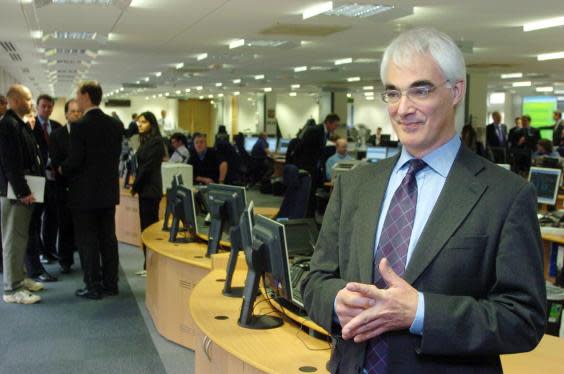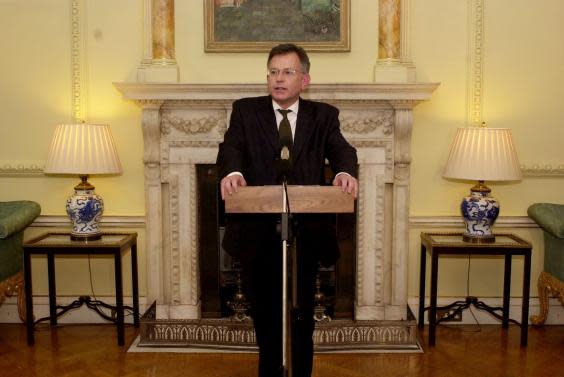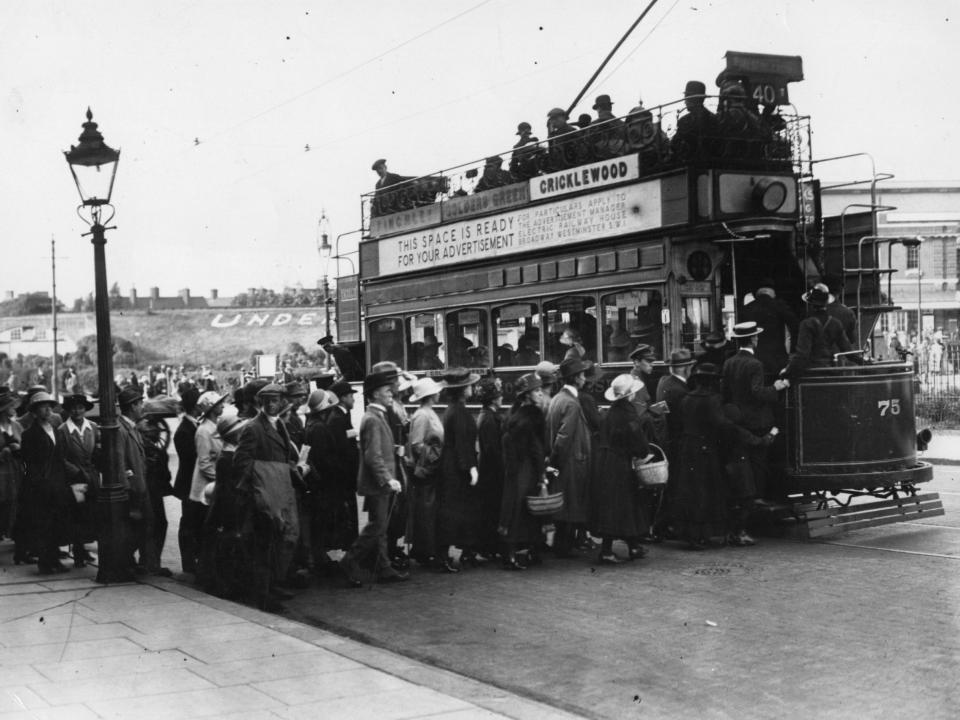The men from the ministry: 100 years of the ministry of transport
The First World War saw useful advances in every form of military transport, from troop train to armoured tank, from motor ambulance to fighter airplane. Out of the ashes of that war emerged a primitive ministry of transport – the precursor to today’s Department for Transport – now celebrating its 100th year.
It was – and is – primarily a ministry of roads, charged with finishing a pre-war classification of highways and funding road maintenance. Roads had to be its preoccupation. After all, the wildly popular internal-combustion engine was only around 40 years old – and the ministry’s old name was the Roads Board.
Add the peculiarity that this new ministry created roadside “lie-bays”, quickly corrupted to lay-bys, and it seems apt that many an eminent politician has been parked in the lay-by on the way out and, less often, on the way up. But why has transport seen such a phenomenal turnover of ministers? Chris Grayling is the current secretary of state for transport... for the time being, at least. His latest “Grayling failing”, allegedly ignoring “crucial facts” regarding the third runway at Heathrow, could mean that even this most mystifyingly bulletproof of minister’s days are numbered.
Over a whole century, the ministry of transport has not kept one identity. It hasn’t been important enough to stand on its own running-board. From 1941-46, it was the Ministry of War Transport, formed by merging the Ministry of Shipping and the Ministry of Transport. From 1953-59 it was called the Ministry of Transport and Civil Aviation. In 1970, then prime minister, Edward Heath declared it part of the Department of the Environment, a lowly status it retained until 1976.
Then came the day in May 1997 that a triumphant prime minister, Tony Blair, needed to find somewhere to place his shouty deputy, John Prescott. The transport brief was again subsumed within a giant Department for Environment, Transport and the Regions, renamed in 2001 to the Department for Transport, Local Government and the Regions.
The women of the ministry
When the ministry has had some influence, it has rarely shed its blokeish image – toys for boys. Men – manly men – have been in charge of nearly all pressure-groups regularly lobbying the department: the RAC, the AA, the Road Haulage Association, freight transportation, British Airways, P&O Ferries, Virgin Trains, whoever.
Nor have there been many women ministers in the job. The most distinguished is Barbara Castle, 1965-68, the one female politician prior to Margaret Thatcher who could have had the keys to 10 Downing Street.
A lifelong non-driver, Castle is credited with restricting drunk-driving, introducing a 70mph speed limit and sowing the seeds for the compulsory wearing of seat-belts. She squandered the opportunity to halt the Beeching cuts, which recommended the closure of half of all railway stations and one third of all railroad miles. She was later promoted to secretary of state for the Department of Employment and Productivity, later becoming the then prime minister Harold Wilson’s secretary of state for health and social services.

Three other women have occupied the ministry, or its equivalent, with varying degrees of success.
A little-remembered Labour politician, Helen Liddell, served a derisory 11 weeks from May to July 1999 (Blair was never very good at reshuffles).
Then a very well-known labour minister, Ruth Kelly, took transport for Gordon Brown, for 15 months from June 2007. This brief was her final cabinet job and, when she resigned to spend more time with her family, she decided not to fight the 2010 general election.
Justine Greening, a rising Conservative, occupied the department for PM David Cameron’s coalition for nearly a year, hardly long enough to get her feet under the table, let alone find a “solution” to Heathrow airport expansion.

Ironically, today’s ministry, looked at as a whole, is a feminine enclave, with two female parliamentary under-secretaries, a female permanent secretary, Bernadette Kelly, and no less than five top civil servants – Lucy Chadwick, Polly Payne, Ruth Hannant, Tricia Hayes and Tracy Westall.
The “manly men” of transport
So did all those male transport office-holders following Labour’s landslide victory in 1945 fare any better? There’s been 39 of them, and they can be divided into five – perhaps artificial – categories.
The first category – easiest to identify – are the eight ministers, culminating with Grayling. One would have to be a pensioner to have clear memory of Alfred Barnes (who had the position for six years under Clement Atlee), Harold Watkinson (who spent 45 months, mainly under Anthony Eden) or Ernest Marples (who presided during Dr Beeching’s ascendency and the birth of the M1, and who spent five years under prime ministers Harold Macmillan and Alec Douglas-Home).
For the whole of Heath’s administration, 1970-74, the Tory minister John Peyton served transport. Later, and for the entire 32 months of James Callaghan’s administration, Bill Rodgers, one of the Social Democratic Party’s “gang of four”, acquitted himself well.

Labour’s Alistair Darling, later chancellor of the exchequer, supervised transport from 2002-2006, again under Blair, soon followed by an equally capable Conservative Patrick McLoughlin, who held the position from 2012-16.
A second category are Labour ministers of transport whose reputations have stood up very well with the advantage of hindsight: Richard Marsh, he who believed in railways; thinker Anthony Crosland, who died before he could assume party leadership; Douglas Alexander, later the Scottish secretary, then shadow foreign secretary; and Lord Adonis, a brilliant mind – as well as being fully committed to the railways.
That leads on to a third category of interest: Conservative ministers of transport whom history will look upon with favour. John Boyd-Carpenter, later the chief secretary to the treasury; Peter Walker, later president of the Board of Trade; Geoffrey Rippon, later shadow foreign secretary; Norman Fowler, later chairman of the party; Malcolm Rifkind, later foreign secretary; George Young, later shadow secretary of state for defence; and Philip Hammond, present chancellor of the exchequer.
A fourth category comprises many male Labour or Conservative ministers of transport who may have served diligently, but never got much further. That list includes John MacKay, Tom Fraser, Fred Mulley, David Howell, Tom King, Nicholas Ridley, John Moore, a competent John MacGregor, an even more competent Brian Mawhinney, Gavin Strang, John Spellar, multi-purpose John Reid and Lord Macdonald of Tradeston.

The fifth, and last, category is that tally of ministers of transport, thankfully very low, whose political careers ended under something of a cloud: Paul Channon, Cecil Parkinson, Geoff Hoon, and Stephen Byers.
By far the most interesting – and disgraced – of these is Byers, a Labour acolyte, elected to represent Wallsend, whose future once looked so promising. He had overall responsibility for transport and the regions for an ill-fated 50 weeks immediately after Blair’s general election victory of June 2001. During his short tenure, he was widely criticised for the Phoenix Consortium “rescue” of the Rover Group, for Railtrack’s premature insolvency, for past sponsorship of media magnate and pornographic-magazine publisher Richard Desmond, and – almost a final nail in his coffin – referring to September 11 2001, the day of the New York twin towers attacks, as a “good day to bury bad news”.
The future of transport
Taking a much broader view of the past 100 years, the Ministry of Roads has never significantly widened its prime responsibility because users of public transport – especially buses, trams, long-distance coaches and regional railways – have, outside London, been considered as “the little people”: immigrants, old-age pensioners, students, and benefit claimants.
There has been no impetus to expand public transport, or to make sure a Swiss model of co-ordination operates, except for four – sometimes half-hearted – peacetime initiatives.
First, came Clement Attlee’s 1948 British Transport Commission, incorporating the newly nationalised “big four” railway companies, canals, docks and, extraordinarily, 246 road hauliers. Dwindling in effectiveness and importance, this commission staggered on until abolition under the 1962 Transport Act.
Second came a whole series of urban passenger transport executive (PTEs), authorised for big cities such as Manchester (Selnec), Liverpool (Merseyside PTE) and Birmingham (West Midlands’ PTE). This move was fatally torpedoed by successive – some would say clumsy – local government reorganisation and, crucially, bus deregulation under the Transport Act of 1985.
Third, there was the Tyne and Wear Metro, a pioneering and serious attempt to combine rapid light transport and heavy rail with connecting buses to serve a conurbation (Nottingham’s rapidly expanding public transport offering in many ways emulates this).

Fourth, and by no means least, is Transport for London (TFL), the worthy and expanding successor to London Regional Transport. TFL has huge range, especially with London Underground coming under its umbrella in 2003, and is a key part of responsibilities reserved for successive London mayors.
Probably the worst moment for “integrated” transport in England and Wales came in 1994. John Major’s determination to privatise (technically to re-privatise) the railways, was a step even Margaret Thatcher considered too far. Opinion is sharply divided as to whether a totally nationalised British rail would have done any better.
Which raises the question: what is the exact remit of the modern Department for Transport? The ministry’s own website suggests:
Encouraging economic growth and improved productivity (via good transport)
Protecting and improving the environment (via landscaping and fewer and cleaner vehicle, engine emissions and so on)
Promoting safety and security whilst using transport or by-standing
Providing good transport to access jobs, services, retail, warehousing, ports, air terminals and so on

By definition, Mr Grayling’s department concedes it doesn’t do very much. Even its part-ownership of the transport infrastructure has devolved to semi-independent bodies like the Civil Aviation Authority, Network Rail, Highways England and the Office of Rail and Road.
The department is a buffer. And, being an object of last resort, depends far more on gifted management than simply “doing”. The buck stops at the door of Great Minster House, 33 Horseferry Road. Or maybe not. That is where acts of god come in: effectively to shield any minister or prime minister.
Since 1945, there have been many air crashes on or over British soil, Lockerbie in 1988 being the most recent commemorated. Railway disasters resonate even more because they are so visible at the surface. Harrow and Wealdstone, 1952; Hither Green, 1967; Clapham Junction, 1988; Ladbroke Grove, 1999; the London bombings of 7 July 2005 – these come immediately to mind. Less often talked about, but always devastating or fatal, are coach crashes – maybe due to driver fatigue and innumerable car, bicycle, and HGV collisions every single day.
Here, a ministry of transport can only stand on the sidelines, offering tea, sympathy and a thoroughgoing Inquiry. Many stable doors shut after the horse has bolted. They promise more cameras, better barriers, lower speeds, more efficient policing, tighter standards and a new inspection regime.
Defenders of the present system would claim straightway that all forms of transport are inherently “dangerous”, all cordons are subject to breach, all drivers are fallible and other people are well-paid to prevent mishaps such as the Shoreham Air Show disaster, currently before the courts.
So what about “new” initiatives – the cross-Channel hovercraft, 1955-2000; Concorde, 1976-2003; DeLorean cars, 1976-1983; Eurostar, 1994 onwards; or HST2 – again ongoing? The ministry is rarely the actual innovator, but it does have a key role in bailouts. Because the public purse is always open, the taxpayer will readily assist where a project is too bold too early.
If there wasn’t a ministry of transport in some guise, or disguise, we would have to invent one. The ministry will always lean towards devolution, arms-length operating and hiving-off, just as it will always favour roads, automobiles and lorries – if only because they were its very first priority in 1919. However, as with jobs-needing-doing right across Whitehall, if everything is a “top priority”, nothing stays top-of-the-pile for very long.



